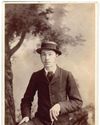
From 1986-1992, Sebastião Salgado travelled across the globe documenting the end of the first big Industrial Revolution and the demise of manual labour. The result was the classic tome, Workers: An Archaeology of the Industrial Age. The book presented six essential chapters: Agriculture, Food, Mining, Industry, Oil and Construction.
The striking black & white images are an eclectic odyssey, from Russian car factories to the beaches of Bangladesh. Collectively, the book delivered a masterclass in photographic technique – content and contrast, lighting and composition. It is testament to the best attributes of the power of photography and what can be achieved through collaboration between subject, sponsor, publisher, editor, colleagues, friends and family.
Thirty years on from its first publication in 1993 and now republished by Taschen, Workers still resonates, perhaps more so as the world’s population is increasingly sucked into a screen/computer/robot-led existence. To mark the anniversary and the book’s republication, we ask leading figures in photography about the significance of Workers, Salgado’s importance and his influence on their craft, and their favourite of his images from this important book.
Andy Greenacre
Director of Photography, The Telegraph Magazine / Telegraph Luxury
‘There are a great many photographs by Sebastião Salgado that have attained iconic status within the canon of his works, but from Workers I have chosen what might, at first glance, seem a more prosaic image. Shot in 1990 at the Brest military shipyard in France, this picture of a welder, shown above, works on several levels.
Denne historien er fra April 23, 2024-utgaven av Amateur Photographer.
Start din 7-dagers gratis prøveperiode på Magzter GOLD for å få tilgang til tusenvis av utvalgte premiumhistorier og 9000+ magasiner og aviser.
Allerede abonnent ? Logg på
Denne historien er fra April 23, 2024-utgaven av Amateur Photographer.
Start din 7-dagers gratis prøveperiode på Magzter GOLD for å få tilgang til tusenvis av utvalgte premiumhistorier og 9000+ magasiner og aviser.
Allerede abonnent? Logg på

Calling The Shots: A Queer History of Photography
Offering an unprecedented view of photographic history through a queer lens, this is a wonderful and powerful book, says

Large-aperture standard zoom, too
SONY has also revealed a new premium standard zoom, the FE 28-70mm F2 GM.

Super-fast, high-res Sony Alpha Ai II
SONY has announced its new professional full-frame flagship camera, the Alpha A1 II.

39 awesome accessories
Our round-up of the best accessories we've used and reviewed this year, along with some old favourites. There's something here for every budget, starting from just £7, including tripods, bags, filters and much more

Such a thing as society
This autumn sees the launch of a major new book and exhibition devoted to examining the multiplicities of photography during 1980s Britain. Peter Dench finds out more

Join Club
The sociable Canvey Island Photographic Club is keen to grow its in-person meet ups

Capturing flight
Winners and finalists of Bird Photographer of the Year share their tips for success with Hollie Latham Hucker

140 years of change
AP has become the world’s oldest surviving consumer photo magazine because we have moved with the times, says Nigel Atherton

Preserving history in platinum
A deep dive into the meticulous art of platinum printing, and the collaboration between the Royal Geographical Society and Salto Ulbeek. Mike Crawford explores how they brought historical photographs to life with enduring beauty and precision

Life in the past lane
What was life like for an amateur photographer in 1884? John Wade takes a trip back in time